- Heddels
- Posts
- Dec 9 - Kudu - Bezel
Dec 9 - Kudu - Bezel
Together with
The To-Do on Kudu – What is this Antelope Leather About?
We explore the uses, qualities, and ethical questions surrounding Kudu, an African antelope whose leather is often found on boots, jackets, and more.
James Smith

You may have noticed that we’re big on leather around these parts. Cow and horsehide are commonplace in the world of heritage clothing, and while a good quality hide from either of those animals is enough to get us giddy, it’s the less common leathers out there that really offer something truly different. Leathers like Kudu.
Kudu leather has been used by many of our often-featured brands such as Alden, Truman, and Viberg, and the odd appearance in our daily Fade features has highlighted its potential for a glowing patina. But what is Kudu leather? If you want to know the answer to that question, take a seat, and we’ll give you the to-do on Kudu.
What is Kudu?
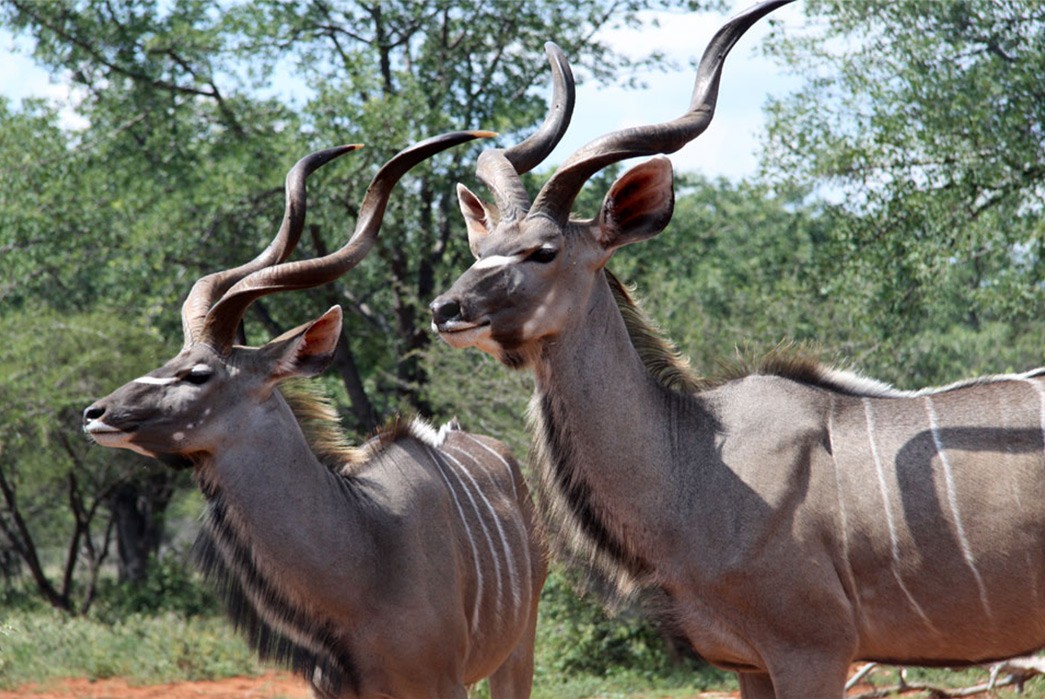
Greater Kudu via Rainsford Hunting.
Kudu leather is the hide from an African-native species of Antelope named – you guessed it – Kudu. The Greater Kudu is a large animal with sizeable twisted horns and a grey or brown short-haired coat that features distinctive vertical white stripes. As the kudu is not currently reared or farmed, all hides come from hunted wild kudu. Kudu leather is chiefly used to make shoes, boots, jackets, and other garments, but it is also used for upholstery.
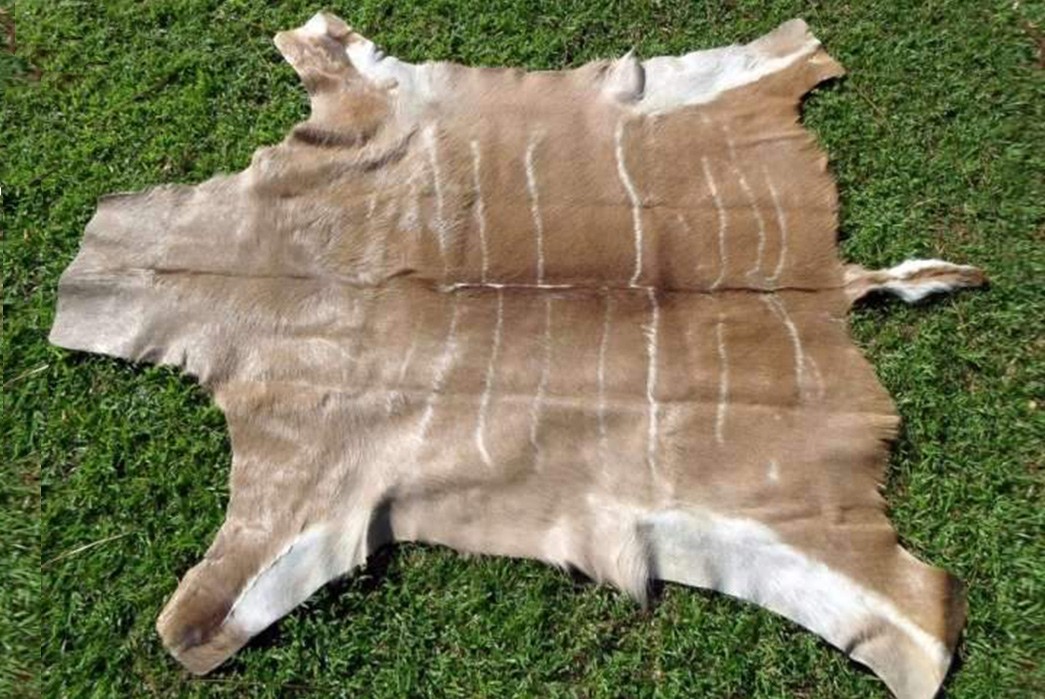
A hair on kudu hide. Image via African Crafts Market.
Confusingly, the iconic American tannery Horween uses the name ‘Kudu’ to describe the color of one of their Calfskin leathers, so be aware this leather is not sourced from the Greater Kudu.
The world of high-end watches is stocked with shady characters. Bezel shines a light on your next watch purchase with their own cutting edge authentication team.
They’re the world’s top-rated marketplace for buying and selling luxury watches for a reason, every watch sold on Bezel goes straight to their HQ where it’s put through a series of rigorous tests by their team to make sure what you paid for is what goes on your wrist.
Download their app to browse their listings of tens of thousands of the most collectible timepieces from some of the top collectors and resellers or connect with their concierge team to find whatever elusive piece you’re looking for.
Click here to download Bezel.
The Characteristics of Kudu Leather
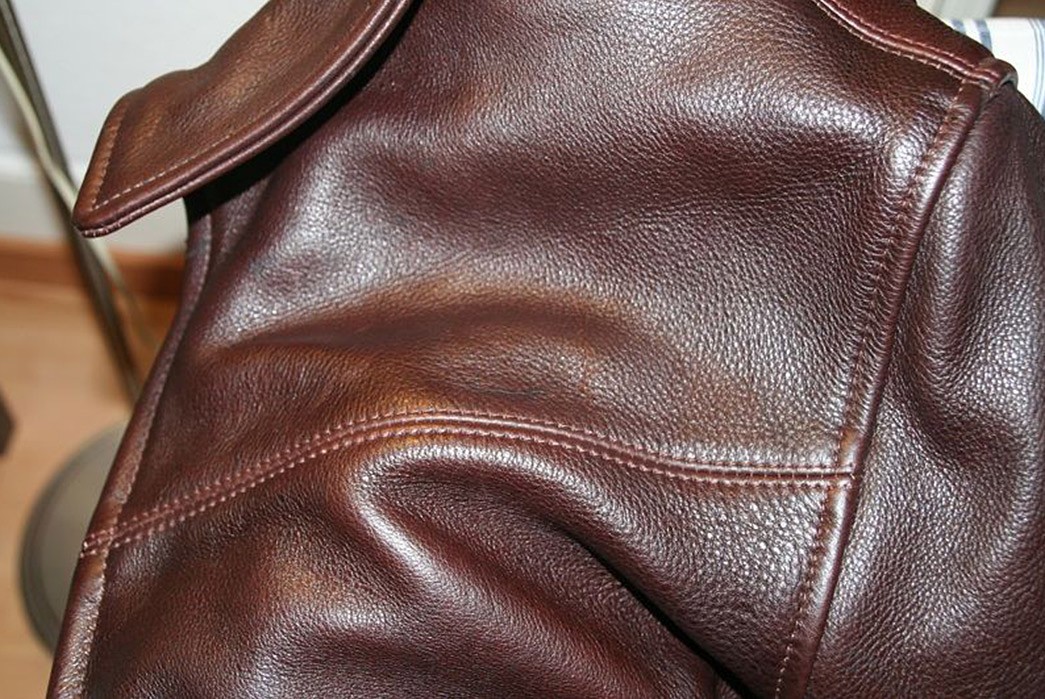
Kudu leather jacket. Image via The Fedora Lounge.
Kudu leather typically comes in a dark brown color that’s comparable to seal brown horsehide, but it may also come in light grey. A mid-to-lightweight leather with a soft hand, Kudu often has a subtle sheen that only helps to illuminate the rich, pebbled texture of the hide.
During life in the wild, Kudu regularly graze amongst the sharp, thorny trees in the African brush, leaving their hides with natural scars and scratches that make each piece of leather completely unique. The reverse of the Kudu hide can also be used to make a buttery suede which, in contrast to the aforementioned exterior leather, is smooth, even, and blemish-free.
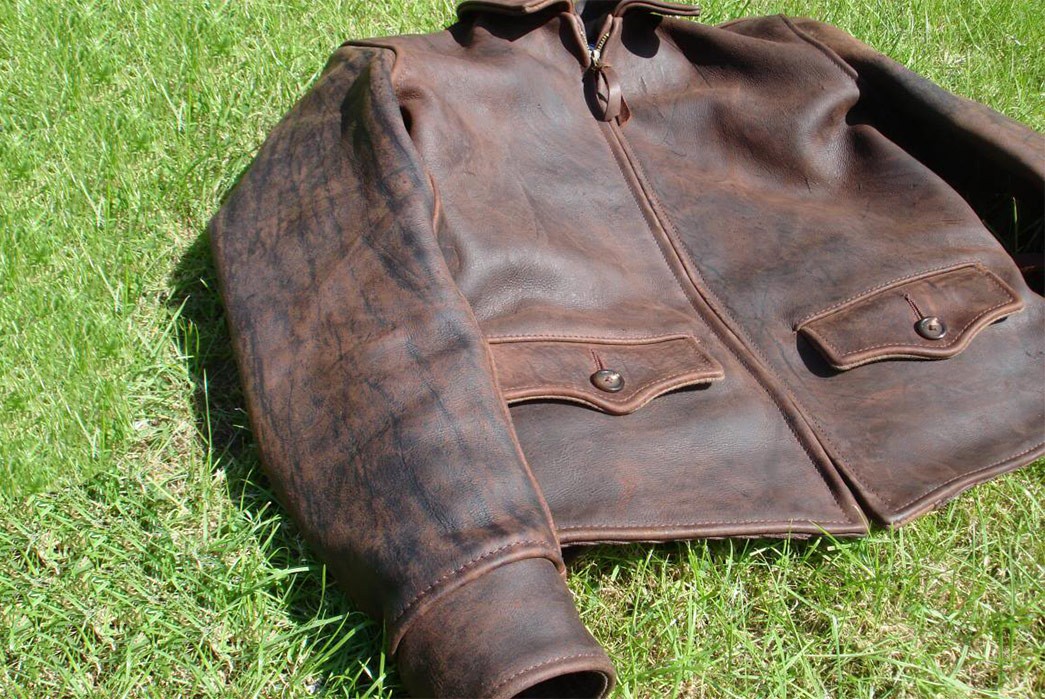
Kudu leather jacket. Image via The Fedora Lounge.
Just like deer or goatskin, Kudu leather is immensely strong, and ages gracefully thanks to its malleable composition which makes for deep creasing. With enough wear, Kudu leather develops a rich, rugged patina as you add your own battle scars next to those naturally formed on the African plains. It is these characteristics that have prompted admirable brands like Aero Leather and Viberg to use Kudu leather on their products as the qualities of the hide resonate with their clientele.
Is Kudu Leather Sustainable?
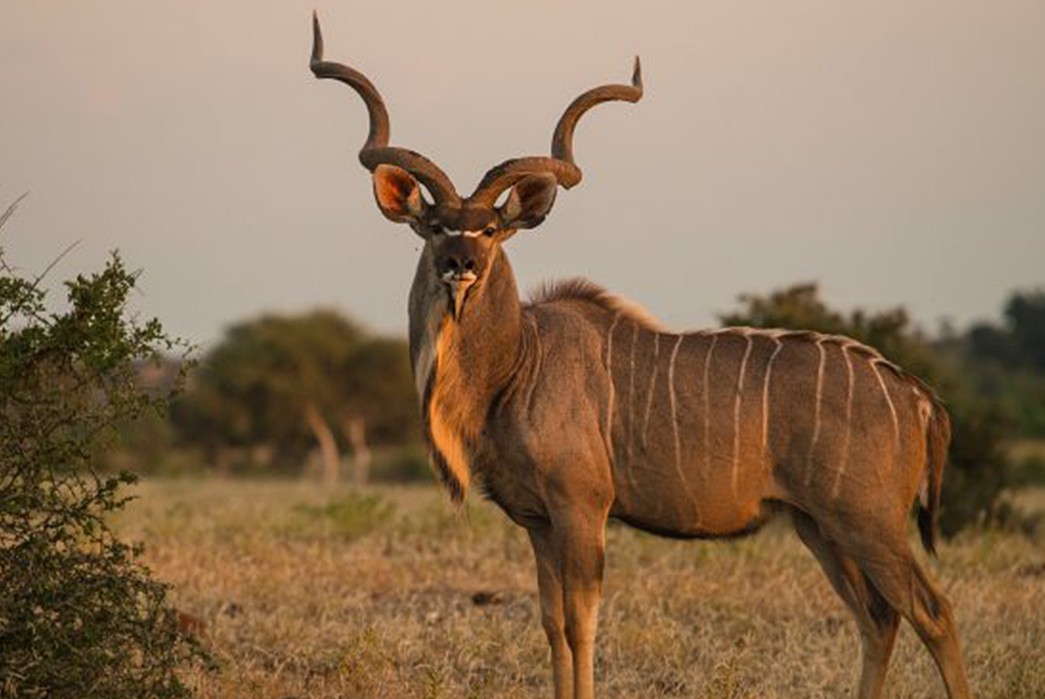
Greater Kudu. Image via Trip Advisor.
The culling and hunting of Kudu is the result of a mandate issued by the South African government to control the overpopulation of the Greater Kudu. In addition to their hides, the meat and horns of the Greater Kudu are sold at local markets, which benefits indigenous communities and reduces waste. This ultimately means that to some extent, Kudu leather can be classed as a sustainable animal by-product that has little impact on the environment, or indeed the conservation of the species.
So even though Kudu is a hunted and exotic leather, it is one that can be consumed with a relatively clear conscience when it comes to environmental sustainability.
Quality Makers of Kudu Leather Products
Here are our picks of some quality kudu leather products including Goodyear welted and stitchdown footwear that can be re-soled and some hardy belts from Crown Northampton. Notice that each of these products exhibits the natural beauty of Kudu leather, which can include natural imperfections that make each piece unique.
Available for $395 from Grant Stone.
Available for $202 from Crown Northampton.
Available for $895 exclusively from Division Road.
Available for $805 from Blue Beach Denim.
Available for $935 from Division Road.
What did you think of today's newsletter? |






